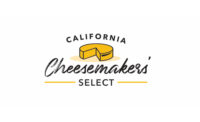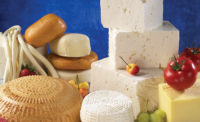Making cheese predates recorded history, but artisan cheesemaking in the U.S. is a relatively new industry. According to a 2016 American Cheese Society (ACS) report, there are more than 900 artisan, farmstead and specialty cheesemakers operating in the United States. While a few artisan cheesemakers have been in business for over 100 years, the average has been making cheese for only 15 years.
At the 2017 ACS Cheese with Altitude conference and competition in Denver this summer, 281 cheesemakers submitted 2,024 entries. The field included cheeses from 36 U.S. states, Canada, Mexico and Colombia.
“Unlike competitions where cheeses are only graded down for defects, ACS’s goal is to give positive recognition to cheeses that are of the highest quality in both their aesthetic and technical evaluations,” explained Stephanie Clark, who chaired the 2017 Judging and Competition Committee.
Defining “artisan”
First place at the show went to Tarentaise Reserve from Farms for City Kids Foundation/Spring Brook Farm, Reading, Vt.
“Artisan cheeses often use raw milk,” said Cheese Program Director Jeremy Stephenson. “The make process is adjusted to the milk, rather than the milk being adjusted to a standardized cheesemaking process. Artisan cheeses often reflect the landscape and season in which they are produced.”
St. Malachi from The Farm at Doe Run, Pa., took second place.
“While artisan cheeses don’t need to be produced from milk from the farmstead, artisan cheesemakers do have a close connection to the milk,” said Matt Hettlinger, winning cheesemaker.
Third place went to Harbison from the Cellars at Jasper Hill, Vt. Mateo Kehler explained what winning a major cheese competition can mean for the artisan cheesemaker.
“Winning Best of Show in 2006 allowed us to borrow the money needed to build Cellars. It’s also a validation of the team that worked to produce this cheese as well as a huge morale boost,” Kehler said.
All three of this year’s winners were farmstead cheeses, which means that the milk was from the farmer’s own herd or flock on the farm where the cheese was produced.
Challenges and evolution
Three women who have been pioneers in the goat cheese industry shared their stories of challenges and triumphs as their industry evolved. Allison Hooper of Vermont Creamery, Mary Keehn of Cypress Grove Cheese and Judith Schad of Capriole met in the 1980s. In the early days, there was very little technical knowledge, banks would not loan money to goat dairies, and vets didn’t treat goats.
Gradually, through networking, trial and error, and sweat equity, the three women refined their models, produced a consistent product, and made a profit. Hooper’s company was recently purchased by Land O’Lakes, an indication that large dairies see the value of adding artisan cheeses to their product line.
Cheesemongers and food bloggers are creating awareness and boosting demand for specialty cheeses. Cheese classes, special events, e-commerce and export opportunities are all driving the growth of the industry. The future looks bright as consumers are learning to appreciate artisan cheeses paired with imported olives, wine, chocolate and even beer.



